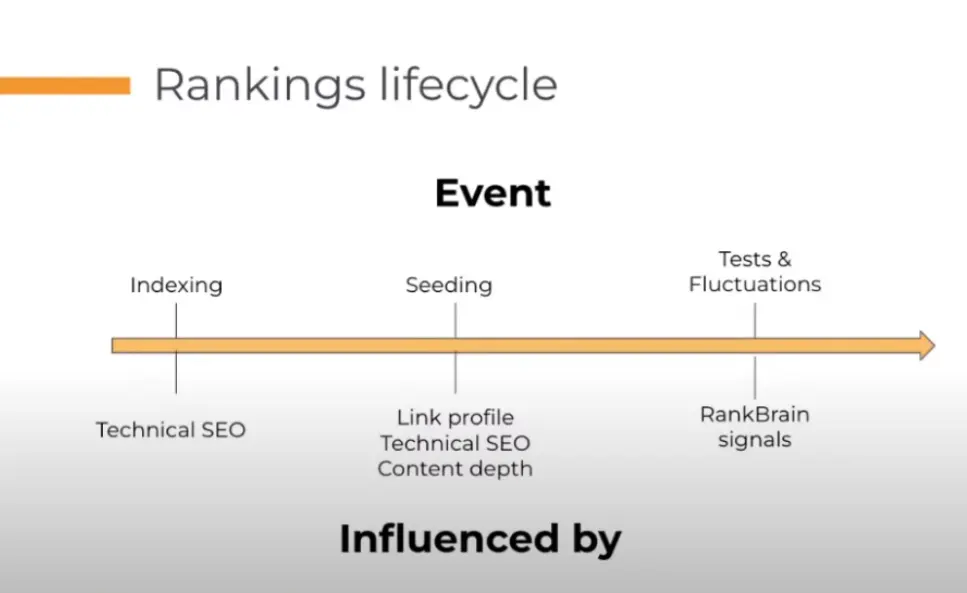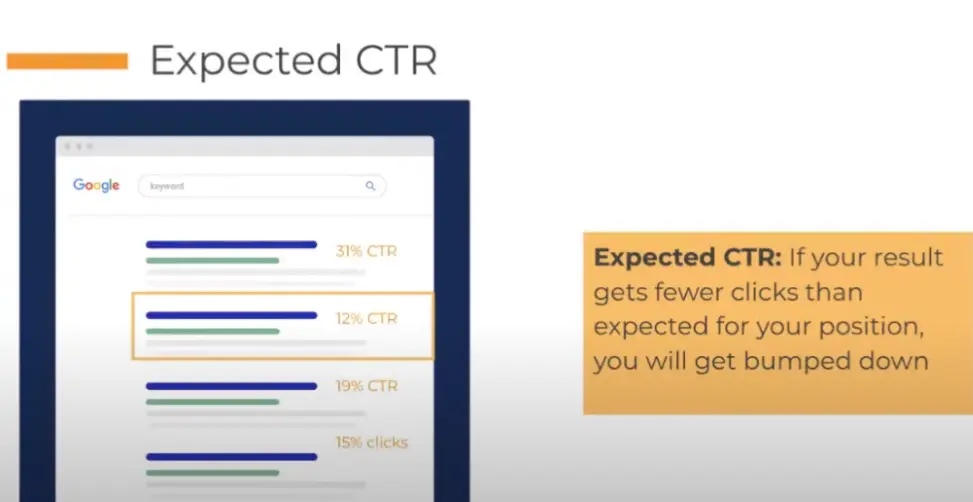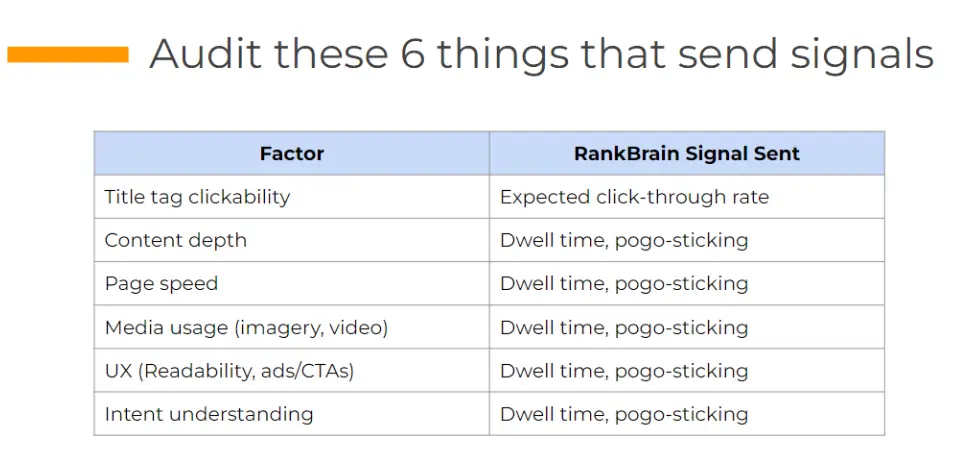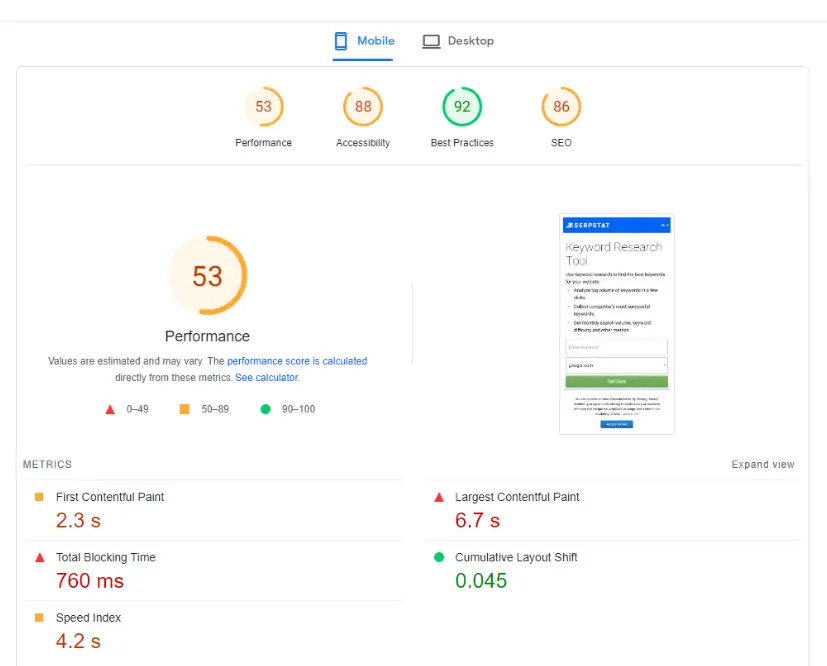Start Exploring Keyword Ideas
Use Serpstat to find the best keywords for your website
SEO in the Era of RankBrain: Signals that Propel Your Website to the Top


What is Google RankBrain? In a nutshell, this AI-driven algorithm defines the relevance of SERPs for every search inquiry. Commonly referred to as one of the top three instruments of this engine, it is a crucial informational asset for experts seeking more advanced SEO signals. According to the experiment, this algorithm performed better than Google engineers in accurately predicting #1 results in search engine results.
To help novice users and experts introduce the benefits of the RankBrain technology, getting crucial insights into how things work in practice is a worthy approach.
This guide is based on a webinar with Jeff Baker, an SEO Trainer. For more detail, feel free to get the video recording of that conversation at Serpstat and join our Google Calendar to learn about such online events first.
Let’s roll straight into the topic!
The Ranking Factor Hierarchy and the RankBrain
Once you are determined to support and improve the health of your website in the long run, it is a good idea for Rankbrain SEO — modern search engine optimization should be modified with RB in mind.
The early stages of indexing and crawling domains were relatively straightforward and plain. They were much more mechanical and quantitative. You could succeed in technical SEO but use poor-quality texts. Along with the inbound link profile, these parameters were overpowering.

However, the more users sent ambiguous signals to Google via their queries; the more complicated it was for the system to deliver high-quality results. The process has become more demanding, with over two hundred ranking factors nowadays. Content quality back then didn’t matter much — it was a continuous production process of creating pages and articles. So the paradigm change in relying on meaning and quality rather than numbers has significantly improved SERPs. In turn, it has enabled any scale business to stand on equal footing with others and be evaluated according to their effort.

RankBrain is doing day-to-day operations and shifting around content based on user signals that are sent in real-time to Google. It is an ongoing measurement and calculation of how people interact with content search engine result pages. Based on that data, it will send positive or negative signals to test your content to see how you do in higher or lower spots.
The diagram below shows the fundamental life cycle of a newly published piece of information and the keyword you're attempting to target. To ensure Google understands your site well, including its architecture, and determines the best position in SERPs, you won’t be able to skip advancing technical SEO, the authoritative link profile of your domain, and the overall depth and relevance of what you publish. By maintaining regular tests on estimating your content quality, RB creates a dynamic flow of ranking signals, leaving space for climbing up new heights.

In practice, the performance of the Google RankBrain technology comes hand in hand with the work of other algorithms. Walking through the basic of the most important ones will be a good starting point for small projects to get a kickstart in any search engine system. Nevertheless, determining what distinctive notions mean will let you go for the right SEO strategy and marketing campaign tactic.
Primary RankBrain Signals
The analyzed ranking mechanism is multi-component. Aside from considering your content quality and keywords, it determines the patterns of searcher behavior and assesses them. Search history of visitors and modern trends form a knowledge base to refer to.
For SEO specialists, other analysis methods with measurable results will help track the ranking signals their sites send to Google. Let’s check the most popular ones from top to bottom.
Expected Click-Through Rate
The rule of thumb is simple — if you don’t cope with the taken responsibility, you are out. Drops in CTR rates that make you lag behind rivals with lower positions are a straightforward signal for Rank Brain to reassess your page and change your rating.

If your website becomes less clickable compared to your competitors in the niche, Google will downgrade your position. The click-through rate depends on several here-and-now changes — from the moment your page is ranked to paid ads that change the visual hierarchy in the rating. The same can happen when a new site with more value and a better CRT rate appears.
Dwell Time
Dwell time is how much time people spend on your page before returning to the SERP. If they come quickly, RankBrain sends a negative signal. It sends a positive signal if they spend long on the page or don’t return to search results. Google will look at you versus your peers and determine how well you keep people on the page.
The longer people check your site and what it offers, the more traffic you will get. At the same time, the RankBrain algorithm also considers this parameter to define your page's credibility.
What is an excellent time range for this indicator? Evidence shows that users must spend at least two minutes on your site. By monitoring your position and identifying your site’s dwell time, you can compare your results with neighborhood pages and set new standards to achieve:
- Start with measuring your on-site dwell time. It is a simple task with services like Google Analytics, which helps experts define a typical session length. The Average Session Duration feature adds up the length of every interaction over the specified time period and divides it by the overall quantity of sessions.
- Increasing dwell time means enhancing user engagement on the domain. This can be done by adding more relevant links to the page, custom tools, images, infographics, and other content formats. Depending on what deliverables you introduce, choose appropriate methods to improve their effectiveness.
In the case of videos, for example, specialists should add accurate and precise closed captions, include a transcript, and provide multilingual subtitles. Creating keyword-optimized tags, descriptions, and titles has to be an obligatory phase by default.

Pogo-Sticking
However, a good dwell time doesn’t protect you from a negative ratio in pogo-sticking. This measured percentage shows how often a searcher goes back and forth between sites in the same rating feed as yours. If you are within the expected limits for PS rates in your position, you are safe, and vice versa.
Google can update RankBrain, but some aspects will remain unchanged. That’s true for pogo-sticking. Understanding user intent helps you present matching keywords and other SEO elements to show search engines that your content answers what visitors are looking for.

Please don’t confuse pogo-sticking with bounce rate. Despite both being essential indicators of your site’s SEO health and performance, they measure and define different aspects of your work. A bounce rate focuses on actions end users take on the page. If they don’t follow your on-site CTA like adding an item in a cart for online shops or filling out a form for consultation, it means abandoning your domain from a bounce perspective.
The causes of pogo-sticking are distinctive and are typically narrowed down to the issues that prevent end users from finding the right data — overly intricate your site’s architecture, poor text composition with no paragraphs, tables, links, etc., or disappointing clickbait content with no practical value for the reader.
Poor UX experiences, including hard-to-exit popping-up forms, slow-loading and error pages, non-functional plugins, and overwhelming buttons, negatively impact RankBrain.
How to Improve Your Website for RB
In the era before Google RankBrain, evaluating all conventional ranking signals to gauge website optimization could be enough. Keyword matching, link variety, quality, content value, and diversification remain influential for indexing your on-site pages. Due to RB tests and analytics, the focus shifts toward how well your domain meets user needs.
When estimating your content and predicting visitor interaction, use the same approach as SEO. It will be functional to audit the factors below to get measurable data to take a course on development-oriented changes.

Feel free to check it out and see a difference in your SEO performance!
Content Aspects
This parameter considers the broad range of related topics and content formats that describe a target main topic. Understanding user intent to present authentic and SEO-optimized data is a must.
It is clear that your content should be relevant and deliver high-quality information. At the same time, the variety of formats matters — the more, the merrier. Given how RankBrain works, your page should also have an up-market backlink profile. The impact of this indicator is less compared to the early stages of ranking, though, since RB can classify links, defining authoritative ones.
Last but not least important, your content should send correct social signals. You can improve user engagement with social media efforts — increasing comments, likes, and other types of interactions will show RB how relevant and popular your pages are.

How well did you write your content? Are you using content writing tools to cover the depth of your topic? That’s going to impact dwell time and pogo-sticking.
Page Speed Specifications
The Google RankBrain algorithm considers your on-site speed. If your site doesn’t load quickly, people no longer have the attention span and leave your platform.
One solution that caters to Google’s guidelines and helps you indicate issues is PageSpeedInsights. If you score ninety and above, you are in the top-quality zone. With the outcome of fifty points or less, your site’s speed will be lacking. You only need to insert your site’s URL and check the results. By reducing redirects and optimizing visual content on the site, to mention a few, experts ensure their page speed improves.

You also can get the complete set of these technical indicators using Audit in Serpstat:

Try Serpstat for free and ensure its credibility!
Uncover the potential of your website with a no-risk 7-day trial of our SEO platform! Throughout the trial, you'll have access to our cutting-edge tools, empowering you to improve your website's technical SEO and overall performance.
Get StartedMedia Usage Benefits
The use of relevant high-quality visuals elevates the overall content. This strategy also improves user engagement and lets search engine algorithms estimate your service better.
If somebody is searching for something, are they expecting a broad use of imagery or video? If you go into search results and say, “I’m searching golf tips,” and nine out of ten results on page one are using images and video, but you are not, you will get another negative signal.
UX and Readability Guide
Using fonts, colors, and other design elements that influence the UX/UI experience, should be wise. If you don't maintain a clear visual hierarchy and overwhelm your page, it can negatively impact your page's performance in SERPs due to lower dwell time, higher bounce and PS rates, and more.

Intent Understanding
Never stop checking your audience’s preferences, interests, and expectations. With advanced SEO standards in mind, taking your time to reflect a target type of user intent will show search engine algorithms that you are doing a great job in satisfying readers’ needs. If you fail to represent keywords based on the searcher's commercial, informational, or navigational intent, you contribute to your site’s losing its ranking in SERPs. In turn, it will also lead to reduced customer loyalty rates, purchases, and other formats of audience interactions with your domain.
Comprehensive Audit for Website Optimization
Conceptualize RankBrain’s influence more practically through testing and recording your site’s performance and SEO success:
- title tags and content auditing;
- checking organic traffic;
- improving backlink profile;
- defining mobile-friendliness issues;
- working on your domain’s architecture.
Final Thoughts
Specialists employ different website optimization strategies to establish a brand as a powerful resource that can easily stand out in SERPs with its authoritative backlink profile and content that delivers data that matches user intent perfectly. Considering the unfading influence of RankBrain technology, it is clear that the ranking process will be even more dependent on the quality of this machine-learning algorithm than nowadays.
Once you build your site’s reputation in Google, confirm that your platform satisfies visitors and their search objectives in a dynamic environment of myriads of websites in the business line. With effort and diligence, this eternal competition for conquering higher positions and, therefore, better customer satisfaction, loyalty, and ROI indicators will surely let you establish a trusted domain based on the RB ranking signals.
FAQ
This distinguished technology analyses lots of data with an improved interpretation of long-tail keywords in SEO and puzzling search queries. Compared to other ranking tools in Google’s suite, RB functions as an AI neural network, presenting well-tailored assumptions on what people would click for a novel inquiry.
Hummingbird was introduced first in 2013 and the other two years later. Both these search engine algorithms are employed by Google as effective strategies for creating ratings of sites, offering relevant information for searchers. While RB has a machine learning aspect, which helps the system to decipher the meaning of search queries, the opposite method is focused on the comprehension of end users’ intents with its semantic search capabilities. The source of information for RankBrain is past searcher inquiries. Hummingbird, in turn, analyses context to determine the meaning of a query.
Discover More SEO Tools
Backlink Cheсker
Backlinks checking for any site. Increase the power of your backlink profile
API for SEO
Search big data and get results using SEO API
Competitor Website Analytics
Complete analysis of competitors' websites for SEO and PPC
Keyword Rank Checker
Google Keyword Rankings Checker - gain valuable insights into your website's search engine rankings
Recommended posts
Cases, life hacks, researches, and useful articles
Don’t you have time to follow the news? No worries! Our editor will choose articles that will definitely help you with your work. Join our cozy community :)
By clicking the button, you agree to our privacy policy.


